Topic 1: Introduction to HIV and AIDS
Learn the basics of HIV, AIDS, and how they affect the body
HIV 101 - Quick Introduction (69 seconds)
Watch this short video for a quick overview of HIV basics before diving into the detailed lesson below.
Importance of understanding HIV and AIDS concepts
There is an increasing number of people with HIV in the Philippines. 2016 estimates from the Department of Health (DOH) show that 62% of new HIV Infections come from young people, 15 to 24 years old. This is why it is important for you to understand concepts on HIV and AIDS which will be discussed throughout the five lessons in this reference material. Additional information about the current situation of HIV in the country will be discussed in Topic 5.
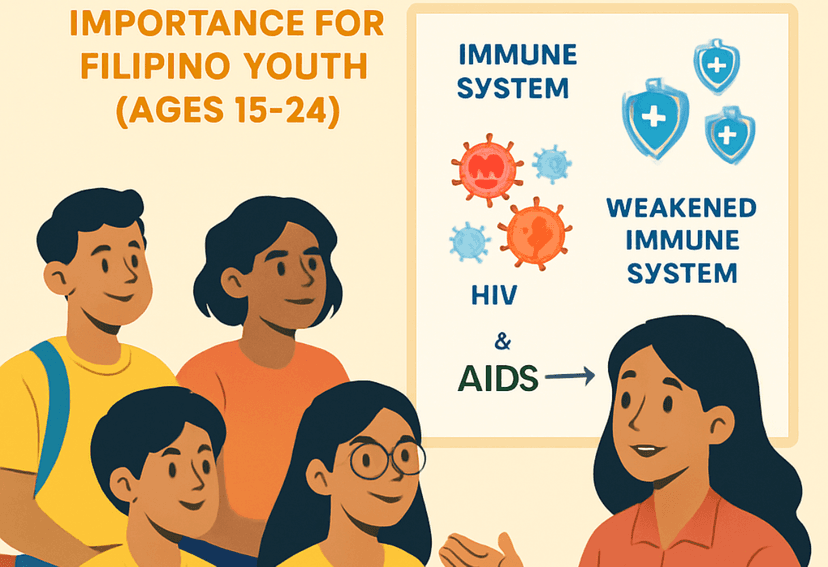
What is HIV?
The immune system is a collection of cells and substances that defends the body against foreign substances (virus, bacteria, or other germs) called antigens, and helps keep the body healthy. When antigens enter the human body, the immune system produces antibodies in the blood to fight the antigens. The immune system can be compared to an army guarding the country and protecting it from foreign invasion. It is composed of white blood cells, called T. lymphocytes and B-lymphocytes, which perform the role of an army. Among the T. lymphocytes are cells called Cluster of Differentiation 4 (CD4). The Human Immunodeficiency Virus or HIV is a virus that attacks these CD4 cells and weakens the immune system. Once HIV enters the cell, it uses this cell to make copies of itself a process known as replication. Over time, the copies of the virus increases in the body which cause more CD4 cells to be destroyed. When this happens, the immune system can no longer defend the body from antigens. This condition is called Acquired Immunodeficiency Syndrome or AIDS.
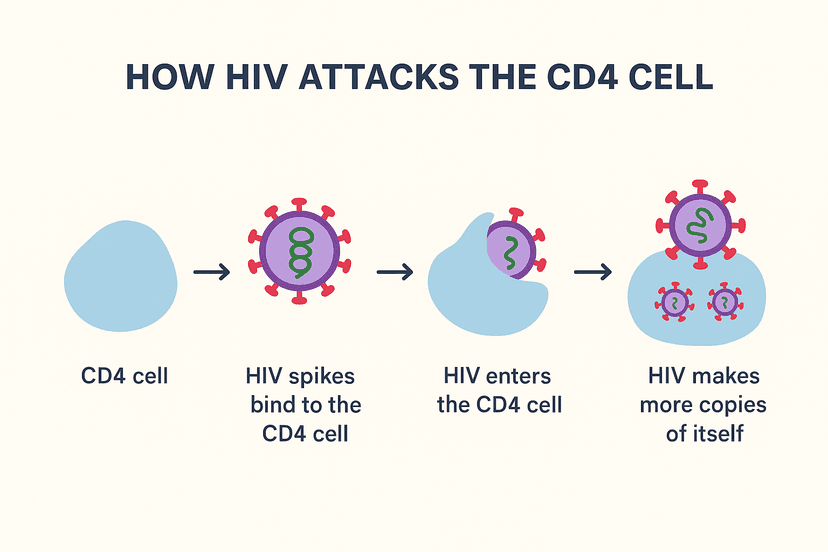
Symptoms of HIV
A person infected with HIV may look physically healthy and well even if the virus is already inside his or her body. Symptoms often begin to appear in the alter stages of HIV infenction. These symptoms are not because of HIV itself but are due to certain infections caused by the different bacteria, viruses, and other germs that may attack the body. These infections do not normally make a healthy person with a strong immune system sick. But the immune system of a person with HIV eventually becomes weak and his or her body cannot fight these infections These infections that attack people with HIV are often curable when Immediately treated with proper medications but HIV infection itself cannot be cured. People with HIV should see their doctors regularly to receive appropriate diagnosis and treatment of these infections.
A person with HIV whose immune system is already weak and is attacked by infections may have symptoms ranging from frequent or chronic diarrhea, severe weight loss, on-and-off fever, cough, night sweats to a severe life-threatening illness. Consult a doctor immediately for further diagnosis if you experience any of the symptoms described below.
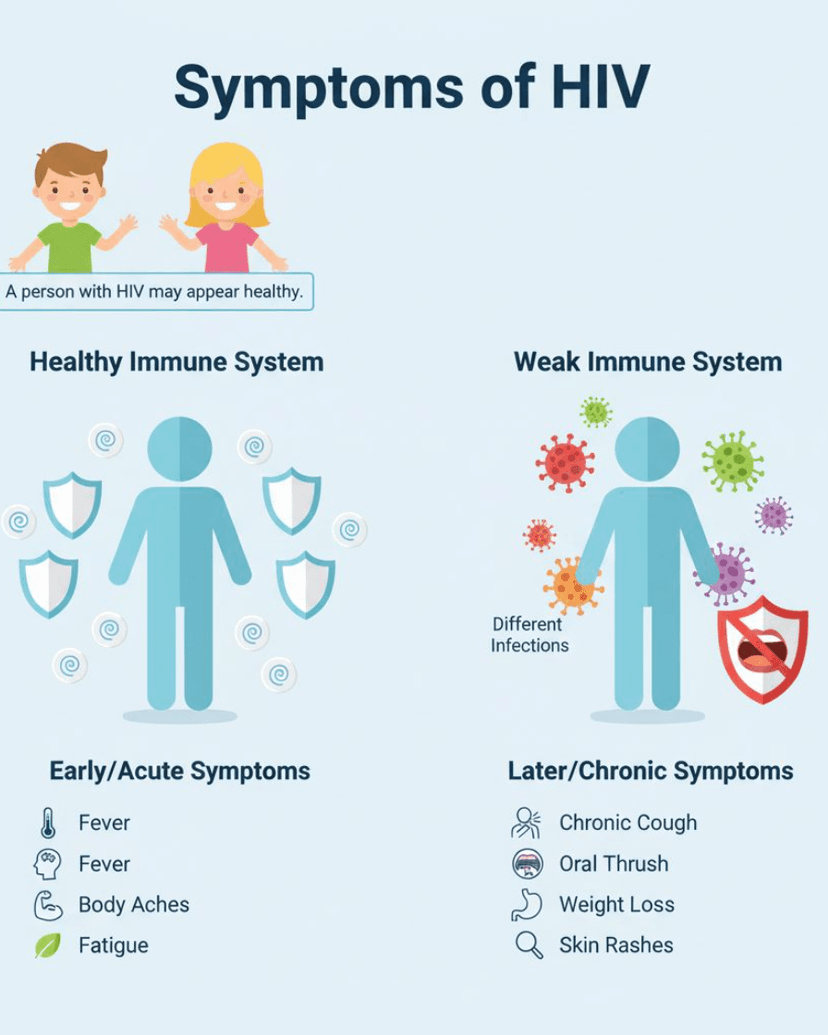
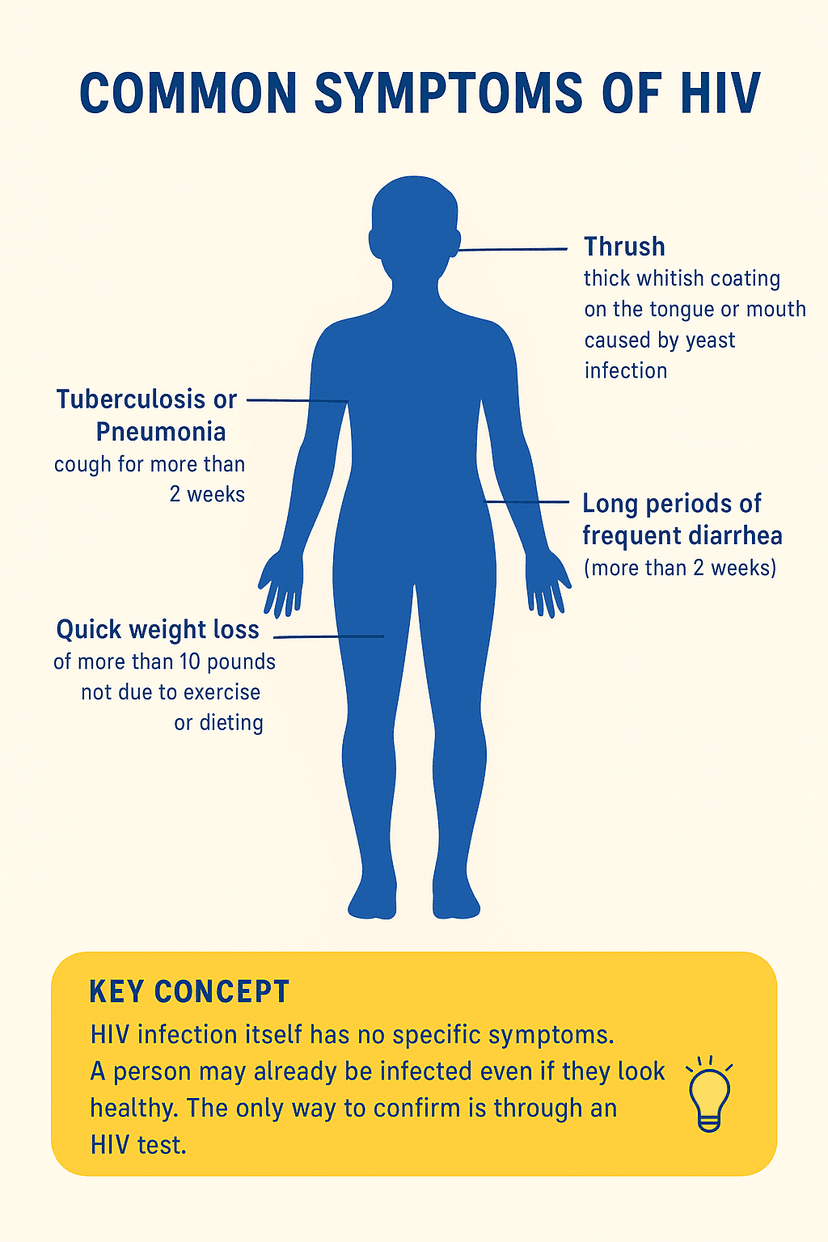
Differentiating HIV from AIDS
Acquired Immunodeficiency Syndrome (AIDS) is a condition of a person infected with HIV when the immune system is already weak or destroyed and the body can no longer fight common Infections.
HIV infection MAY LEAD to AIDS but a person with HIV DOES NOT NECESSARILY have AIDS.
H - Human because this virus can infect human beings ONLY. Animals and mosquitoes cannot have HIV
I - Immunodeficiency because the virus causes a deficiency or a failure to work property in the body's immune system. The body becomes weak and not able to fight infectione
V - Virus because this organism is a virus, it is not able to reproduce by itself. It reproduces by taking over the machinery of the human cell
As HIV increases in the body, the immune system becomes even weaker. This makes it difficult for the body to fight infections When there are many infections present at the same time, the condition is called AIDS
A - Acquired because it is a condition transmitted from person to person. It cannot be inherited or passed through genes
I - Immune: because it affects the body's immune system, which functions to fight germs such as bacteria and viruses
D - Deficiency: because it makes the immune system not able to work properly, making the body unable to fight infections.
S - Syndrome: because a person with AIDS may experience a wide range of symptoms due to different diseases and infections
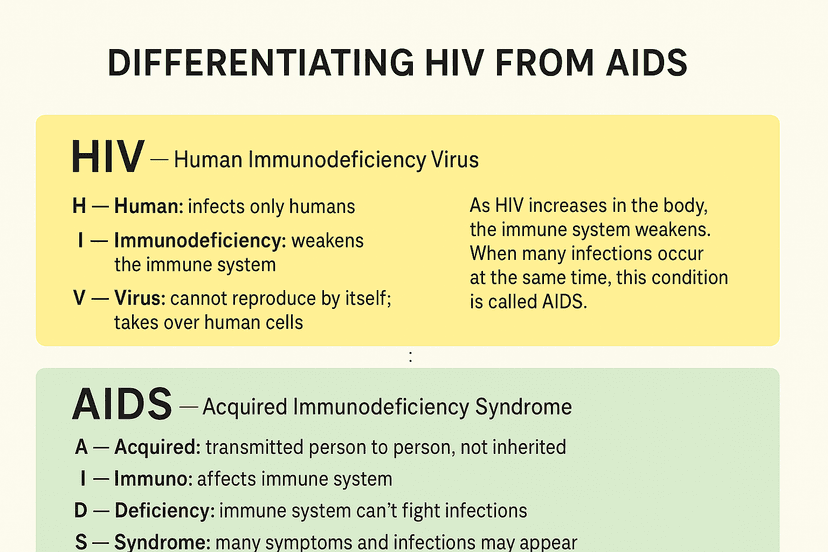
Treatment for HIV: Antiretroviral Therapy
At present, there is NO VACCINE available to prevent HIV infection
There is also currently NO CURE for HIV that would eliminate the presence of the virus within the human body. A person who gets infected with HIV will have HIV for life. However, there is treatment available that slows down the spread of HIV.
The treatment is called Antiretroviral (anti • retro • viral) Therapy (ART) which uses medicines called antiretrovirals (ARV). These medicines are needed to slow down the replication of the virus, preventing the CD4 cells to be destroyed. Having enough CD4 cells allows the immune system to fight infections.
Without ARV, a person with HIV may die of infections within 5 to 10 years. Taking ARV every day will prolong the life of a person with HIV. ART will be discussed further in Topic 4.
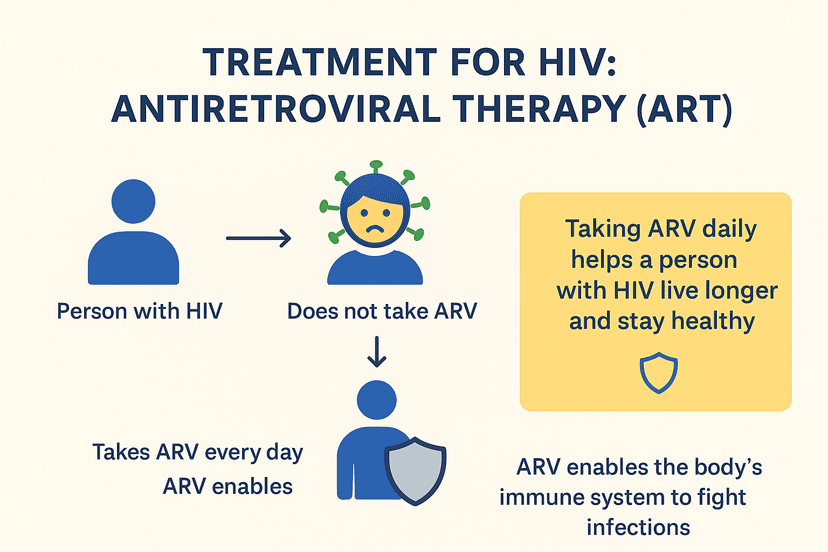
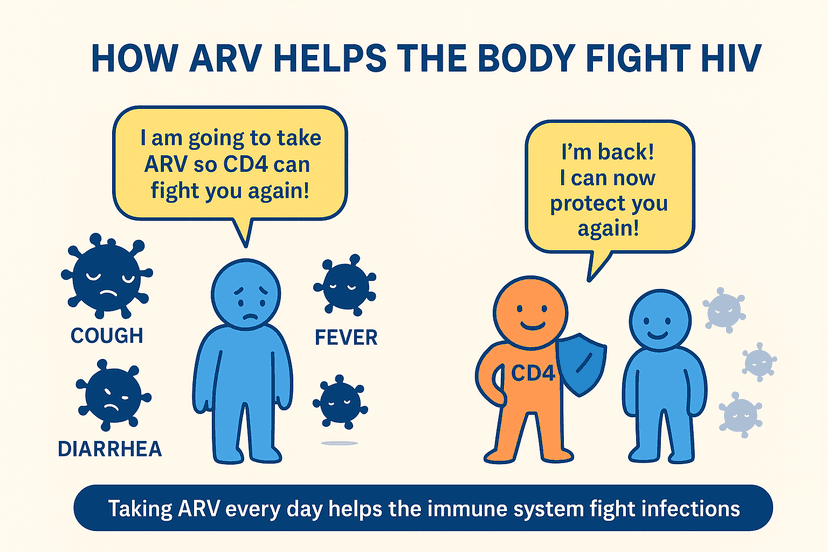
To continue, this is what happens to the body when a person with HIV starts taking Antiretroviral (ARV) medicines everyday.